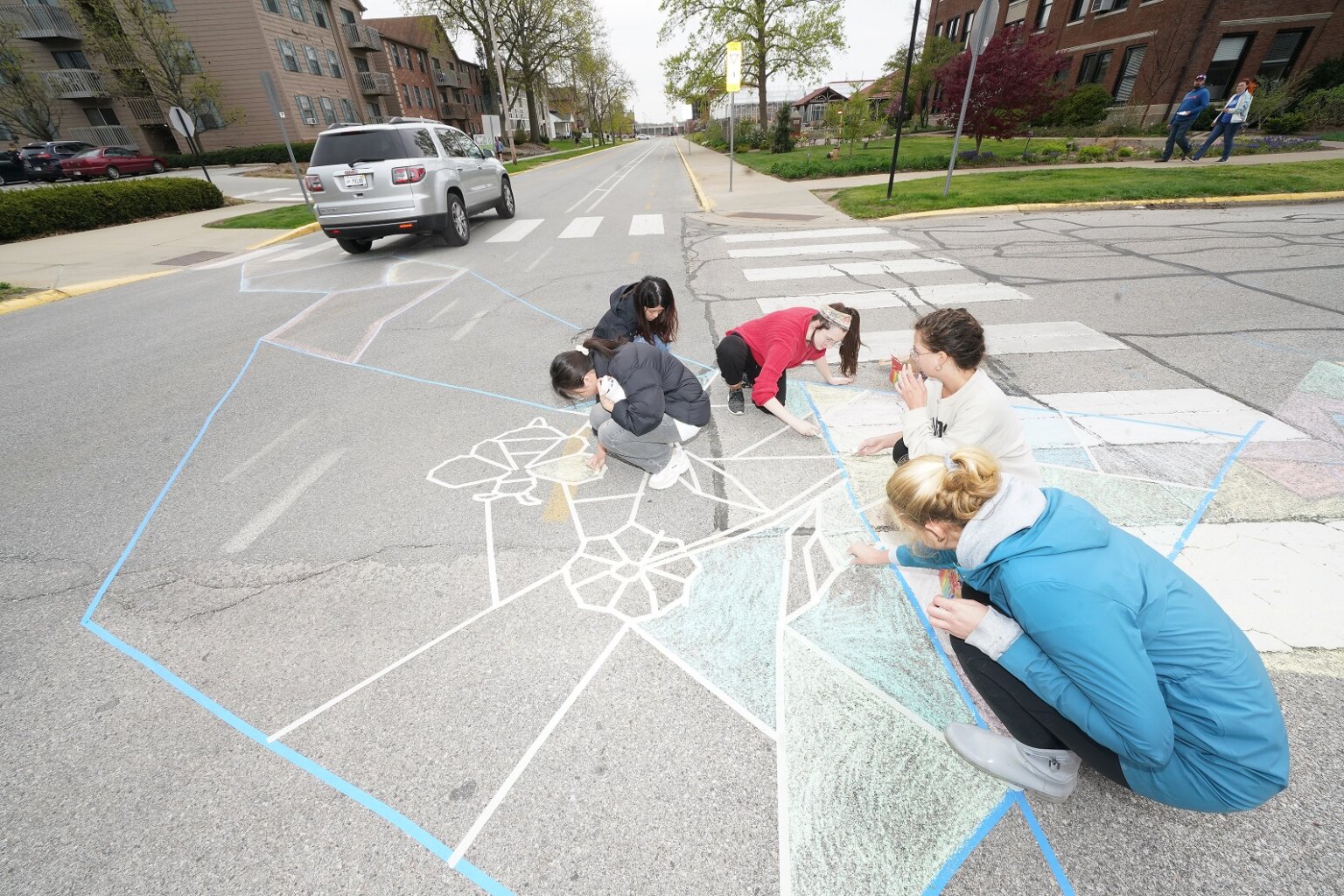From space to place: how landscape architecture students are rethinking Purdue’s campus
On a cloudy Thursday afternoon, Yiwei Huang’s landscape architecture class was busy bringing a three-week brainstorming to life, rethinking what the Ag Mall could be for those who pass through in their daily activities.
Huang, an assistant professor of landscape architecture, said each week throughout the semester she would discuss a key word that is trending in modern culture and how its definition impacts the field of environmental design and landscape architecture. In the last three weeks of the spring semester, Huang said her class discussed the idea of “placemaking,” a concept that puts people into the center of space creating and planning.

“This is an idea that is being discussed actively in urban design, urban planning and within the landscape architecture field. It’s a strategy that cities will use to bring an underutilized space to life and cultivate community spirit,” Huang explained. “This has become increasingly crucial as some cities are filled with parking lots and grey streets that look identical. Those identical areas are seen as a ‘space’ rather than a 'place,' so placemaking serves as an effort to bring life to an area, creating an opportunity to make memories.”
Huang said she knows students learn better by doing rather than simply reading, so she partnered with Shannon McMullen, an associate professor of art and design and of American studies, to create the Campus Living Room project, where the class would find an underutilized space and create a more inviting and interactive place.
“Campus spaces have become what they are currently for many reasons, including safety and hazard concerns,” Huang said. “But that doesn’t mean we can’t transform them to cater more to students’ lives and interests. And temporary art installations can be the first step to initiate dialogues.”
Four student groups, each with a budget of $200, were tasked with creating a design or activity that would draw in passersby. As the semester progressed, two groups merged together, with the other two working closely together as well to connect each piece of the “place” together, making it a larger and interactive experience.
Encouraging participants to cross Marstellar Street was a sidewalk illustration of connecting geometric shapes, with students working as quickly as possible to not interrupt traffic, but creating a significant image that made drivers slow down to see what was going on around them. In another effort to draw in spectators in the evening, illuminating poles were constructed with PVC piping.
Payten Keffaber, a senior in landscape architecture, said her group opted to merge with another group to create a labyrinth of neon pink flags that held a collection of flower and herb seeds. Leading up to the labyrinth participants were asked to paint a watercolor picture in exchange for a plant or seeds.
“I happened to come across the idea of labyrinth and had sort of brain blast moment knowing this would be such a cool idea,” Keffaber said. “The goal of the water coloring section is to funnel people into the labyrinth as a sort of stopping point.”
While the project itself was fun for Keffaber to work on, she said one of the best parts was how it brought her and her classmates together.
“We went to about five different stores as a group to get all the materials we needed, and that was a really great time,” Keffaber said. “Originally, I was just working with one other student, but over time we all merged into this one project.”
Working to draw in participants in the evening hours, the fourth group of students crafted a luminaria along the edge of the mall using PVC piping and LED lights scheduled to glow as the sun went down. By the next morning, the Ag Mall had returned to its blank slate, as the students returned to retrieve what was left of their “place.”





